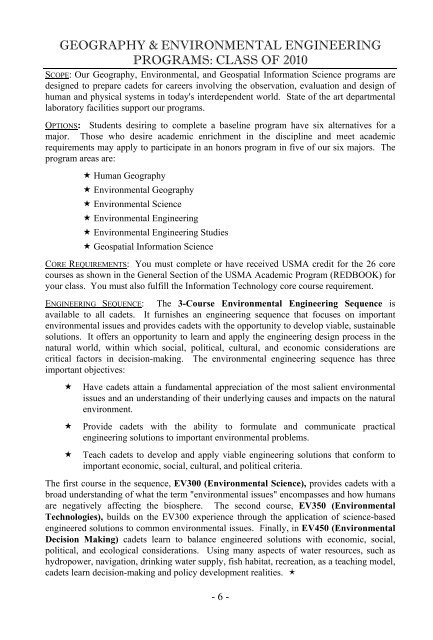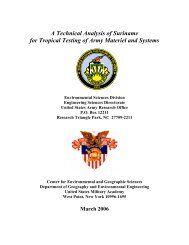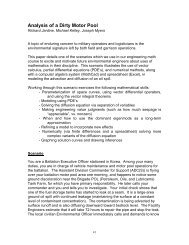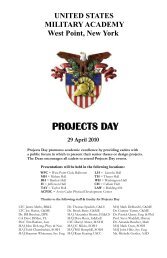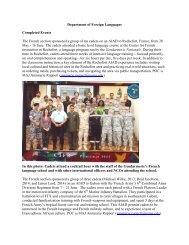GENE Catalog (aka Grey Book): Class of 2010 - West Point
GENE Catalog (aka Grey Book): Class of 2010 - West Point
GENE Catalog (aka Grey Book): Class of 2010 - West Point
- TAGS
- gene
- catalog
- grey
- class
- www.usma.edu
Create successful ePaper yourself
Turn your PDF publications into a flip-book with our unique Google optimized e-Paper software.
GEOGRAPHY & ENVIRONMENTAL ENGINEERING<br />
PROGRAMS: CLASS OF <strong>2010</strong><br />
SCOPE: Our Geography, Environmental, and Geospatial Information Science programs are<br />
designed to prepare cadets for careers involving the observation, evaluation and design <strong>of</strong><br />
human and physical systems in today's interdependent world. State <strong>of</strong> the art departmental<br />
laboratory facilities support our programs.<br />
OPTIONS: Students desiring to complete a baseline program have six alternatives for a<br />
major. Those who desire academic enrichment in the discipline and meet academic<br />
requirements may apply to participate in an honors program in five <strong>of</strong> our six majors. The<br />
program areas are:<br />
� Human Geography<br />
� Environmental Geography<br />
� Environmental Science<br />
� Environmental Engineering<br />
� Environmental Engineering Studies<br />
� Geospatial Information Science<br />
CORE REQUIREMENTS: You must complete or have received USMA credit for the 26 core<br />
courses as shown in the General Section <strong>of</strong> the USMA Academic Program (REDBOOK) for<br />
your class. You must also fulfill the Information Technology core course requirement.<br />
ENGINEERING SEQUENCE: The 3-Course Environmental Engineering Sequence is<br />
available to all cadets. It furnishes an engineering sequence that focuses on important<br />
environmental issues and provides cadets with the opportunity to develop viable, sustainable<br />
solutions. It <strong>of</strong>fers an opportunity to learn and apply the engineering design process in the<br />
natural world, within which social, political, cultural, and economic considerations are<br />
critical factors in decision-making. The environmental engineering sequence has three<br />
important objectives:<br />
� Have cadets attain a fundamental appreciation <strong>of</strong> the most salient environmental<br />
issues and an understanding <strong>of</strong> their underlying causes and impacts on the natural<br />
environment.<br />
� Provide cadets with the ability to formulate and communicate practical<br />
engineering solutions to important environmental problems.<br />
� Teach cadets to develop and apply viable engineering solutions that conform to<br />
important economic, social, cultural, and political criteria.<br />
The first course in the sequence, EV300 (Environmental Science), provides cadets with a<br />
broad understanding <strong>of</strong> what the term "environmental issues" encompasses and how humans<br />
are negatively affecting the biosphere. The second course, EV350 (Environmental<br />
Technologies), builds on the EV300 experience through the application <strong>of</strong> science-based<br />
engineered solutions to common environmental issues. Finally, in EV450 (Environmental<br />
Decision Making) cadets learn to balance engineered solutions with economic, social,<br />
political, and ecological considerations. Using many aspects <strong>of</strong> water resources, such as<br />
hydropower, navigation, drinking water supply, fish habitat, recreation, as a teaching model,<br />
cadets learn decision-making and policy development realities. �<br />
- 6 -


